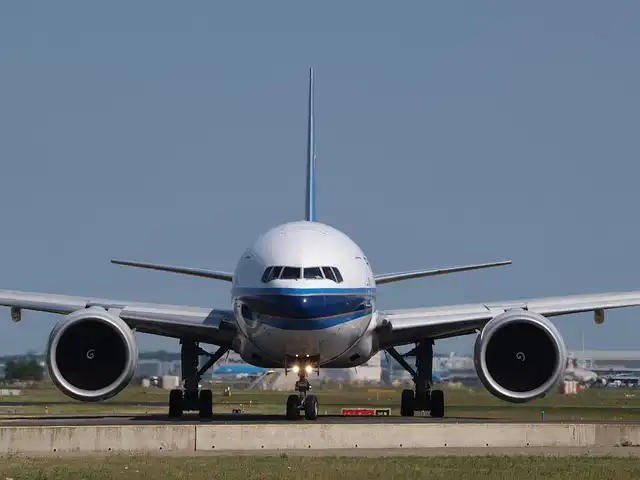US DOT vs. China Airlines: Russian Airspace Dispute

US DOT aims to restrict Chinese airlines' access to Russian airspace, citing unfair advantages. Chinese airlines protest, warning of longer flights, higher costs, and passenger discomfort. Impact on US-China air travel is debated.
United state providers and market teams have backed DOT’s stance, saying that Chinese airlines get an “unreasonable advantage” by flying much shorter and less expensive paths through Russian airspace, which remains closed to united state and most Western service providers. “This has actually led to considerable adverse affordable effects on U.S. air carriers,” DOT claimed in its initial order.
DOT’s Stance and China’s Reaction
China Eastern claimed the order “falls short to secure guest civil liberties and the general public passion,” advising that detouring around Russian airspace “would certainly prolong trip times by 2 or 3 hours” on essential courses and “dramatically increase guest exhaustion and discomfort.” It included that the modification “would result in raised fuel usage causing greater prices,” calling the proposal “inconsistent with the core concepts of improving efficiency, boosting ease of access and serving the general public rate of interest that are constantly supported by DOT.”
If approved, the problem would put on all passenger and combination (passenger-cargo) flights run by seven mainland China-based airlines to or from the united state, yet not to all-cargo carriers such as Air China Freight or SF Airlines.
Impact on Passenger and Cargo Flights
Air China separately asked DOT for more time to reply to the show-cause order, calling the two-business-day target date “uncommonly brief.” The airline claimed the proposition “will unquestionably threaten the general public rate of interest by detrimentally impacting a significant variety of travelers … that have actually currently made their traveling arrangements.” China Southern and Sichuan Airlines supported Air China’s motion, defining the regulation as “a substantial policy shift” and urging even more time for “well-considered feedback.”
Airlines Request More Time
DOT turned down the request in an Oct. 14 order, specifying there was “no engaging factor for more hold-up.” The company said the overflight practice “has been underway for a significant period” and “resulted in a disparity that increases to a level for which the general public passion requires the division’s intervention.” If the limitation is wrapped up, it added that affected airlines would certainly have a 30-day wind-down duration.
It included that impacted airline companies would certainly have a 30-day wind-down duration if the constraint is wrapped up.
The Oct. 9 order would prohibit Chinese airline companies from making use of Russian airspace on United state– China traveler and mix (passenger-cargo) services. Chinese carriers were not affected and have continued to make use of Russian routes on some long-haul services.
Concerns Over Operational Complexity
Xiamen Airlines resembled those problems, stating the proposition “will develop considerable trouble and functional complexity for airlines.” The carrier stated “much longer trip times will straight affect travelers between China and the united state, interfering with regular exchanges and inflicting unnecessary burdens on the traveling public.” It included that rerouting “introduces extra risk elements … and is especially negative for trip safety during the upcoming winter season.”
China Southern and Sichuan Airlines supported Air China’s movement, defining the policy as “a significant policy change” and advising more time for “well-considered feedback.”
Limited Immediate Impact
With just 4 of 18 nonstop U.S.-China paths operated by mainland China-based airlines lately going into Russian airspace, the prompt result of the recommended ban looks to be moderate. The influence might expand if more paths return or if Washington widens the policy to consist of other foreign service providers, such as Cathay Pacific and Air India.
The Oct. 9 order would restrict Chinese airlines from utilizing Russian airspace on United state– China passenger and mix (passenger-cargo) solutions. Chinese service providers were not affected and have continued to use Russian routes on some long-haul solutions.
Air Connection Remains Low
The order comes as U.S.-China air connection stays far listed below pre-pandemic levels. OAG Schedules Analyser information shows U.S. service providers are running regarding 27,700 two-way seats compared with 31,400 by Chinese airlines– a consolidated overall of concerning 59,100 weekly seats, less than one-third of the 196,000 recorded at the exact same factor in 2019.
Chinese airline companies have urged the Trump administration to withdraw its proposal to prevent them from flying via Russian airspace on paths to and from the united state, advising that the plan would lengthen flights, elevate costs and injury reciprocal air solution healing.
1 air travel2 China airlines
3 Flight Routes
4 Russian airspace
5 travel restriction
6 US DOT
« Aloft Miami: Bonvoy Points for Top Survey Scores?Spooky Season Staycations: Haunted Houses & Halloween Getaways »
